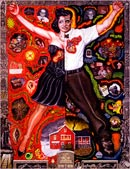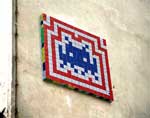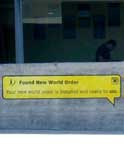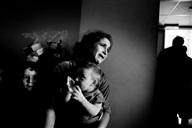NYT:
IF P. T. Barnum had hired Breughel or Bosch to paint sideshow banners, they might have resembled the art of Joe Coleman. Obsessively depicting a grim moral universe of transgression and retribution, Mr. Coleman paints grotesque images of murderers and victims, freaks and monsters, disease, depravity and perversities of every kind.
In his painstakingly detailed paintings, Charles Manson leers, JonBenet Ramsey pouts, pinheads dance, drunkards lie with poxied whores, and corpses display their wounds like obscene stigmata. Drug addicts loll in ruined cityscapes under boiling H-bomb skies, 1930’s gangsters grin on their way to the gallows, and Mr. Coleman and his wife, Whitney Ward, reign over the apocalypse, enthroned on the head of a giant Satan. In a startlingly prophetic vision of his from 2000, the twin towers burn.
Here.









